Savory duck pate macarons filled with rose cream is a unique flavor pairing that's perfect for cheese and charcuterie boards or as appetizers. Savory profile also helps cut down the sweetness in macarons.
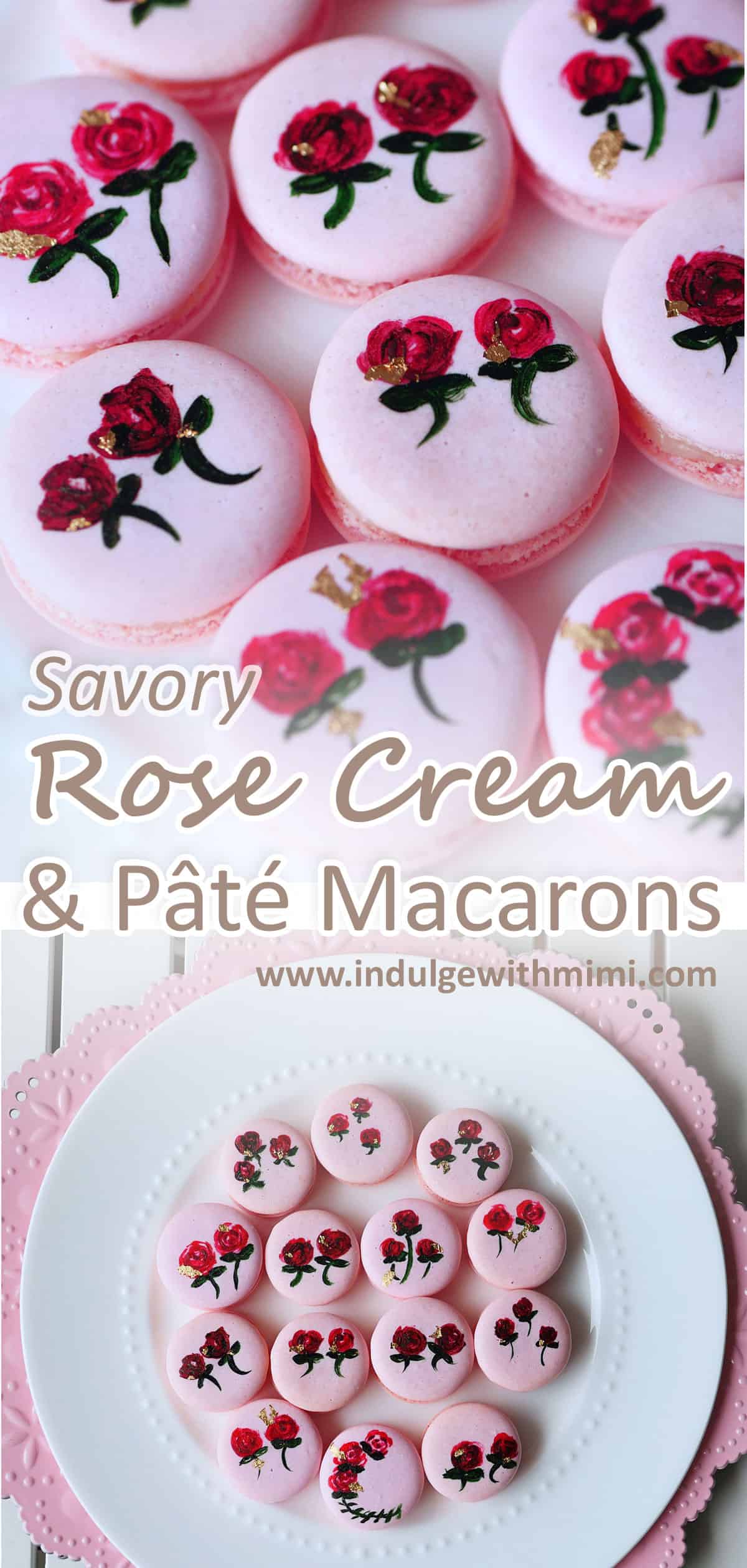
Jump to:
Ever since I tried Pierre Herme's foie gras macaron during tea time at the Ritz in Hong Kong, I have wanted to make savory macarons myself. With so many sweet filling out there, a savory macaron filling sandwiched by two sweet macaron shells accompanied with a sweet and fragrant rose cream, this is one unique macaron that will really excite the senses.
Why You'll Love Savory Macarons
- Savory flavor profile cuts down the sweetness of macaron shells.
- Unique & unexpected flavor pairing.
- Perfect for appetizers, parties, and special events.
- Pairs amazingly with wine and champagne.
- A great addition to any cheese or charcuterie board.
What Is Pâté?
Pâté is made from mixing together lean meat and fats with herbs, spices and wine into a paste or loaf. It's flavor profile is mostly savory and is usually served as a bread or cracker spread.
Where Can I Buy Pâté?
Ingredient shopping for this recipe brought me to one of my favourite places - Granville Island. I purchased just under 200 grams of Apricot Duck Pâté from Oyama Sausage, located in the Granville Island Public Market, known for their large array of high quality pâtés and sausages. I decided on the duck apricot pâté since I had tried it before and found it to be very approachable with a subtle sweetness to it, allowing it to pair well with a sweet macaron shell and rose cream. You can use any type of pâté if you are unable to find something similar.
Pâté can usually be bought fresh at gourmet grocery stores, specialty butcher's shops and shops specializing in cheese. Packaged pâté can also be found in wine shops, well-stocked grocery stores, usually in the deli area, and even online on Amazon.

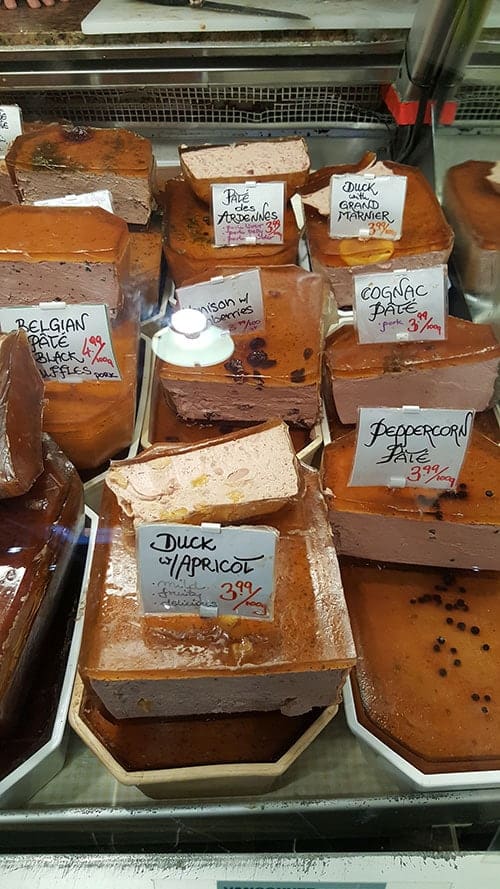
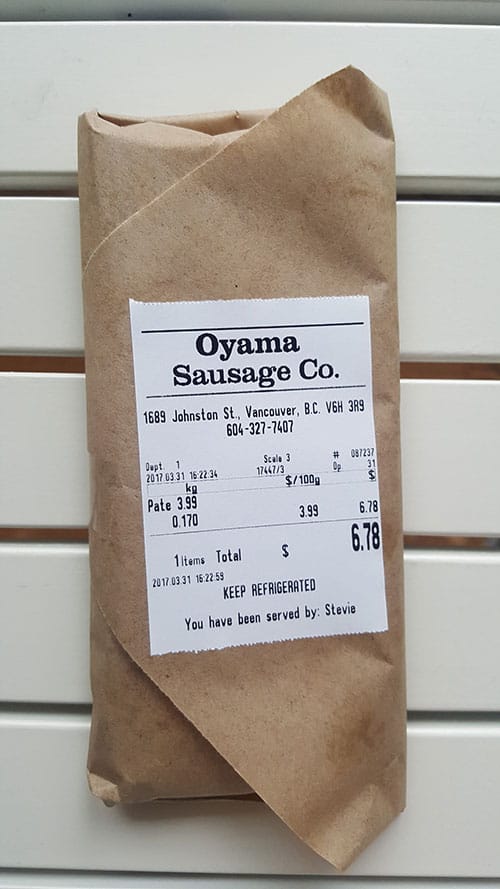
Tips for Success
- This cream along with the pâté can mature the macaron shells faster than other fillings so it can be eaten sooner.
- Unused pate can be wrapped tightly and kept in the freezer for up to 2 months.
- Butter can be brought to room temperature more quickly by cutting it up into small pieces and placing it in the oven with the light on.
- Always be careful when working with hot syrup. Keep a bowl of cold water around just in case.
- If you don't have a thermometer, you can test the syrup by putting a drop into ice cold water. It will firm up and you can make a small soft pliable ball with it, hence the name Soft Ball Stage. You'll also notice that the syrup bubbles up slowly unlike how vigorously it was bubbling up in the beginning.
Finish with Hand Painting
You may also recognize these macarons from my previous post - Hand Painted Macaron Tutorial - where I showed you how to paint roses onto macaron shells that can be used as wedding favors or as pretty edible art on a sweets table. Once you're done assembling the shells, you can try your hand at decorating them and bringing your macaron game up several notches!
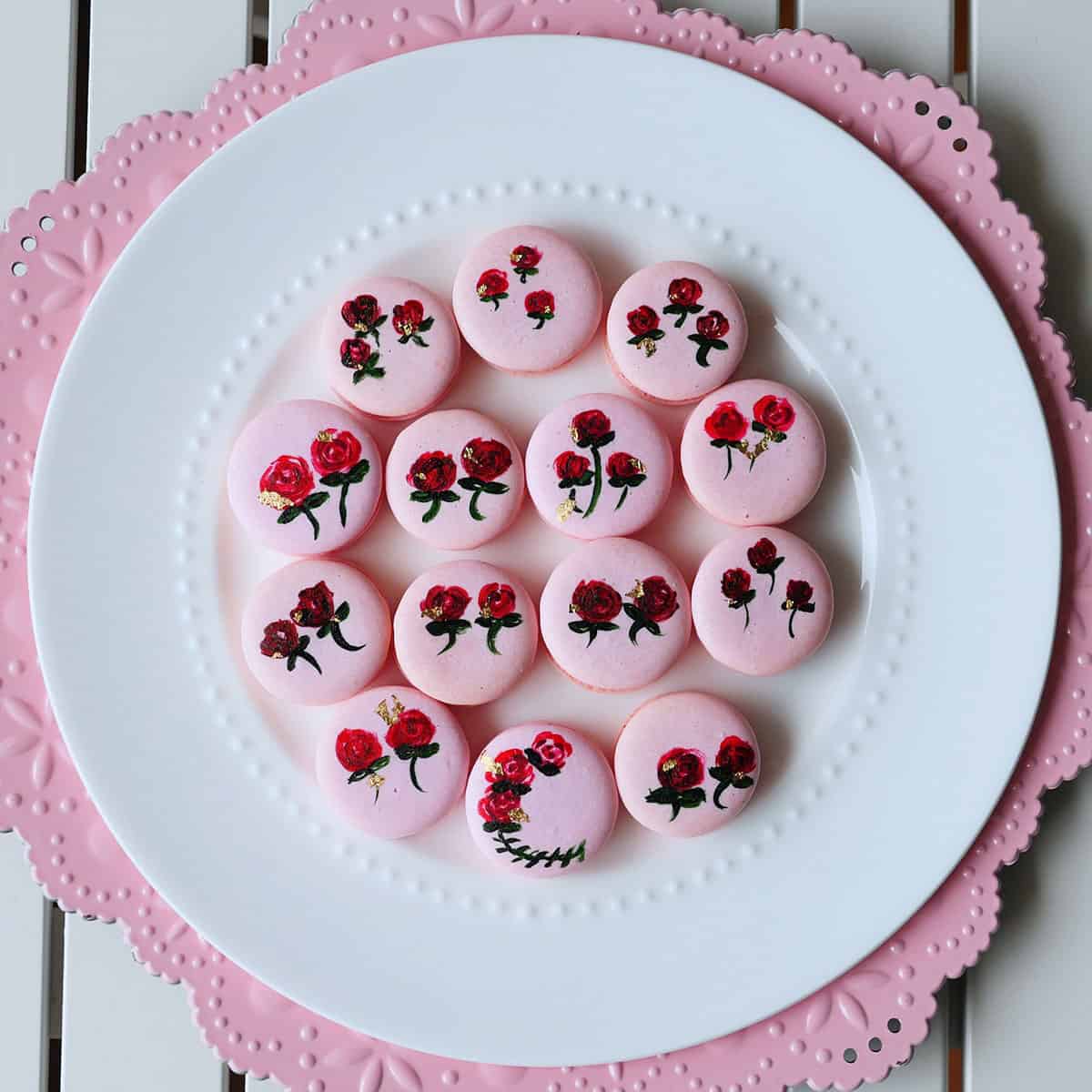
Step By Step
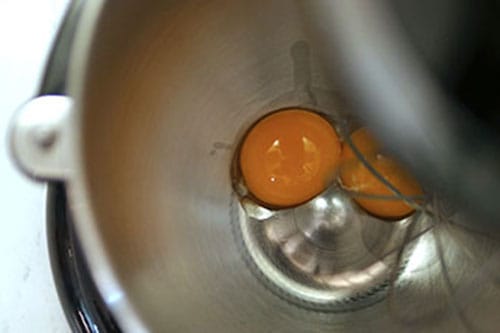
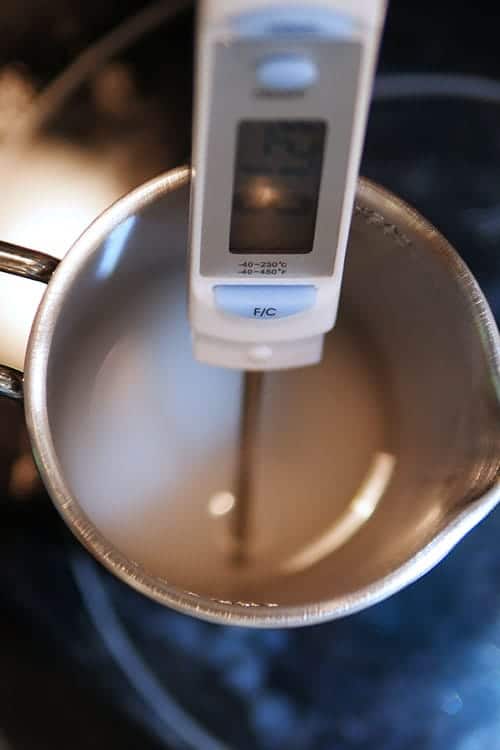
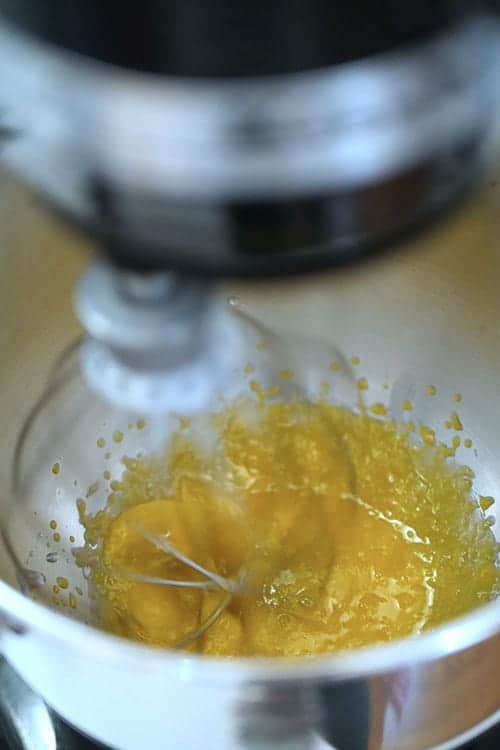
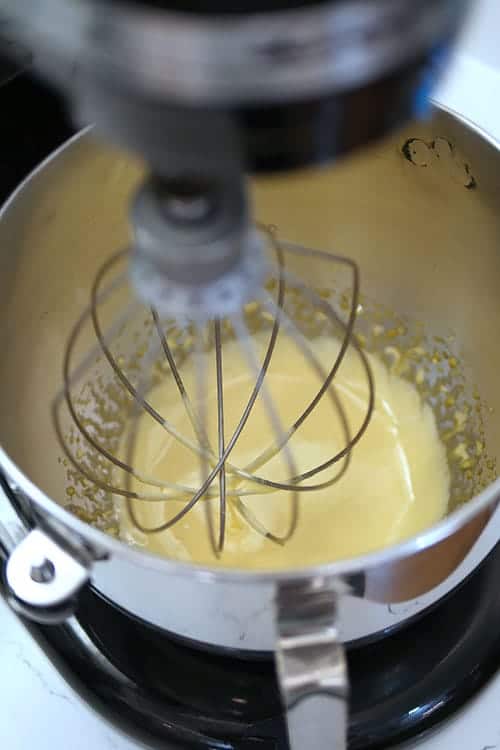

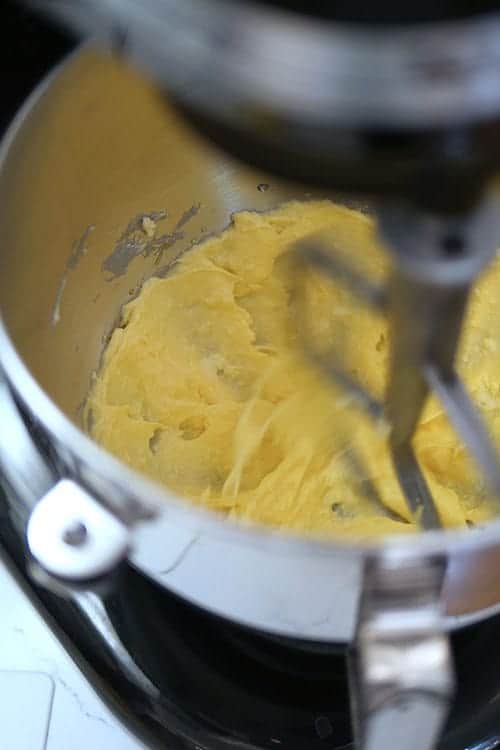

Recipe
Savoury Macaron Filling - Rose Cream & Duck Pate
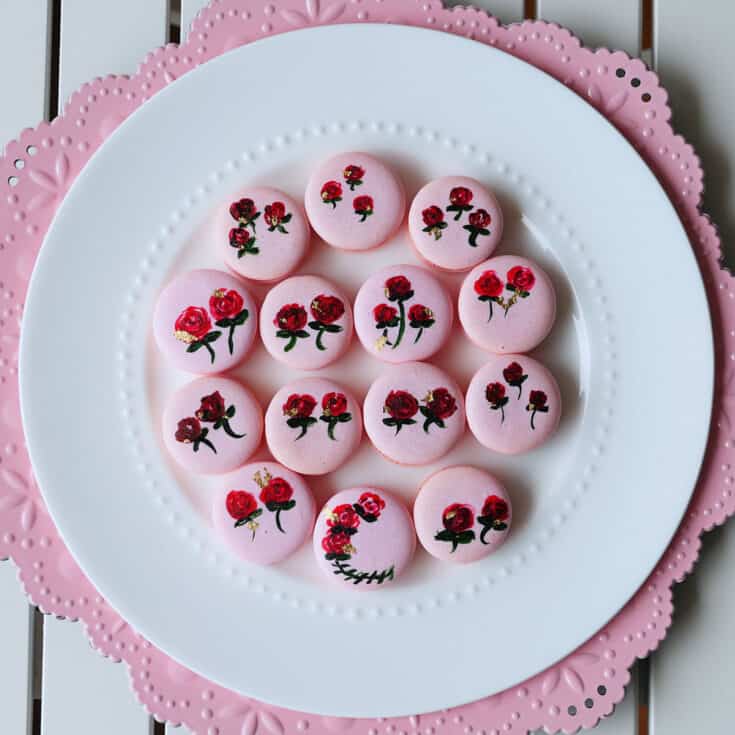
Savory duck pate macarons filled with rose cream is a unique flavor pairing that's perfect for cheese and charcuterie boards or as appetizers. Savory profile also helps cut down the sweetness in macarons.
Ingredients
Basic Macaron Shells
- 130 grams almond flour
- 130 grams powdered sugar
- 90 grams castor sugar (Note 1)
- 100 grams egg whites, aged, room temperature
- ¼ teaspoon cream of tartar
- GEL color of your choice
Rose Cream
- 2 egg yolks
- 65 grams granulated sugar
- 3 ½ tablespoon water
- ⅛ teaspoon salt
- 155 grams butter, (room temperature)
- ½ teaspoon rose extract
- 150 grams pâté
Instructions
Basic Macaron Shell
- Set aged egg whites out at room temperature.
- Pulse almond flour and icing sugar together in a food processor to further break down any large pieces of almond flour.
- Sift dry ingredients: almond flour, icing sugar. Discard big pieces of almond that can't be sifted.
- If you are new to making macarons, please read the instructions to my BEST MACARON RECIPE before attempting to follow the rest of the instructions since it is condensed for the advanced macaron baker.
- With the balloon whisk attached, whip the room temperature egg whites on low-medium speed.
- Add cream of tartar when it becomes foamy.
- Turn up the speed to medium.
- Once the whisk starts to leave tracks in the egg whites, add sugar a little at a time.
- Turn the speed up to medium-high and whip until firm peaks, stop mixer and add gel food color if desired. Continue whipping on medium-high until stiff peaks.
- Fold the dry mix and meringue together until the batter becomes a "lava" or honey-like consistency.
- Transfer batter into a piping bag fitted with a round piping tip.
- On parchment paper or silicone mats, pipe out round shaped macarons.
- Rap the tray hard on the counter to remove any excess air bubbles. Use a toothpick to pop any remaining bubbles.
- Wait until the shells become completely dry before baking.
- Bake at 325F for 12-14 minutes. Every oven is different, you may need to adjust your own temperature settings. Please read How to Use Your Home Oven Properly for Baking Macarons if you are unsure.
- Macarons are done when the foot doesn't push back and the tops don't move when you wiggle it.
- Once baked, let cool completely before removing from the baking mat/parchment paper.
Rose Cream Macaron Filling
- Place granulated sugar and water in a very small sauce pan. Heat on med-high heat.
- Once it reaches 225F, start beating the egg yolks in a stand mixer with the whisk attachment on med speed. It will begin to look lighter.
- Once the sugar reaches soft ball stage (238F), take it off the heat. (You can do this a bit earlier since the syrup temperature will continue to rise.)
- Set the stand mixer to low speed and start pouring in the syrup from the side of the bowl. Be careful not to pour it onto the whisk since this will cause splashing and hot syrup is dangerous!
- Set the mixer on high speed and beat until the bowl is no longer hot when you feel it with your hands.
- Change to the paddle attachment and add butter a little at a time and beat until it's smooth and creamy.
- Add salt.
- Add rose extract and incorporate.
- Place rose cream in a pastry bag and pipe a ring of cream around the outer edge of the macaron shell.
- Add a dallop of pâté in the center with a small spoon.
- Assemble the two macaron shells together.
- Place in the fridge and let mature 12-24 hours before eating. Enjoy!
Notes
Recommended Products
As an Amazon Associate and member of other affiliate programs, I earn from qualifying purchases.
Nutrition Information
Yield
24Serving Size
1 gramsAmount Per Serving Calories 151Total Fat 10gSaturated Fat 4gTrans Fat 0gUnsaturated Fat 5gCholesterol 45mgSodium 105mgCarbohydrates 13gFiber 1gSugar 12gProtein 3g
This information is provided as a courtesy and is an estimate only. This information comes from online calculators. Although indulgewithmimi.com attempts to provide accurate nutritional information, these figures are only estimates.

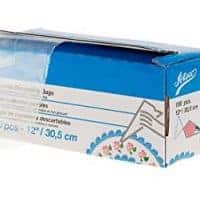
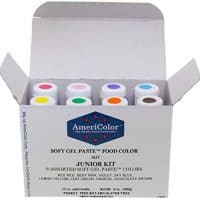
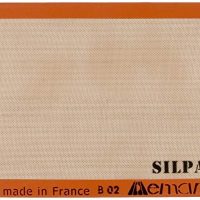
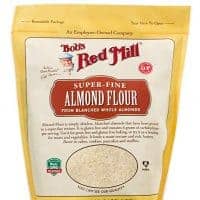
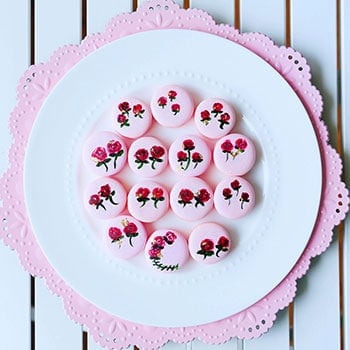

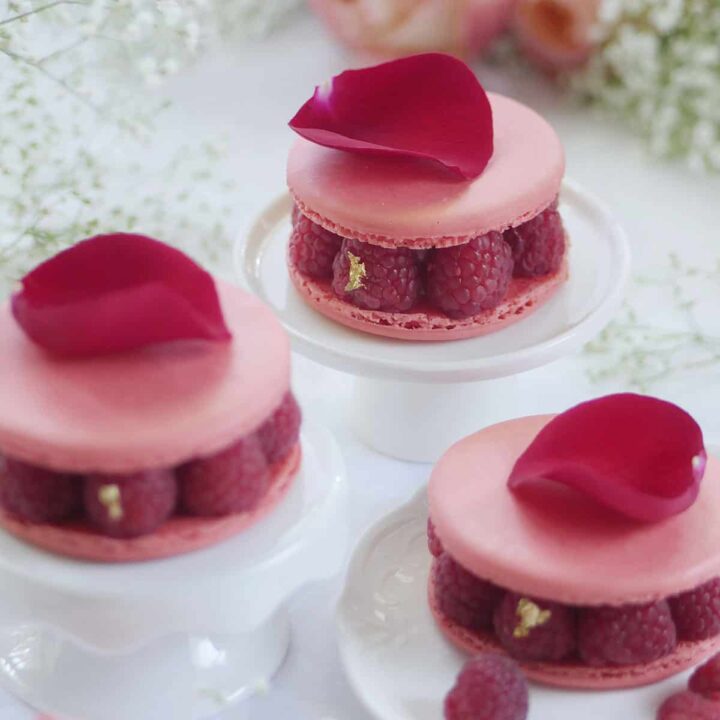
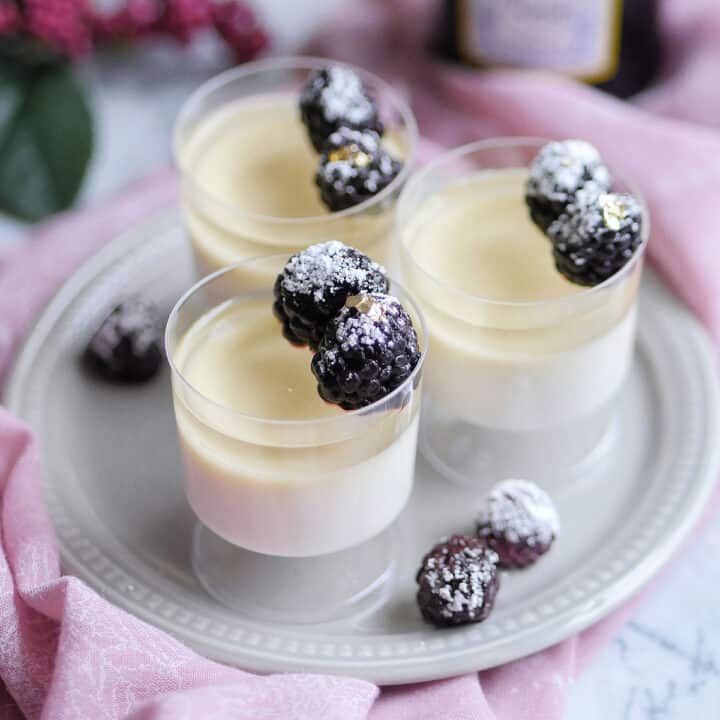
Leave a Reply